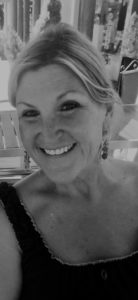With the COVID-19 pandemic still underway, elective care appointments (which include cancer screenings) have declined drastically. During the beginning of the pandemic, the American Cancer Society Cancer Action Network found a 46 percent decrease in the identification of new cancer patients for six types of cancer. Due to the decline in cancer screenings, the National Cancer Institute predicts over 10,000 breast and colorectal cancer deaths in the next 10 years.
Now more than ever, it is important to get screened for cancer. The American Cancer Society has various resources to help identify screening recommendation ages, provide answers to common screening questions, and find a health center that provides cancer screenings.
October is Breast Cancer Awareness Month, and the National Breast Cancer Foundation is inviting us to R.I.S.E. together to help uplift those affected. Below are various ways in which we can all R.I.S.E.
– Rally In Screening Everyone
- Take the eBook Quiz to find breast health resources
- Donate to help provide mammograms to women in need
– Rally In Serving Everyone
- Volunteer at Helping Women Now
- Donate to support those serving at-risk populations
– Rally In Supporting Everyone
- Wear a pink ribbon during October
- Share stories of those affected by breast cancer
- Visit N.B.C.F.’s Wall of Support to leave an inspiring message
- Increase awareness through social media posts
By increasing awareness, together, we can R.I.S.E.
Raising Awareness
Katie Malin, Admissions Director at Advanced Health Care in Colorado Springs, supports Breast Cancer Awareness Month by sharing her story:

It all started with my annual mammogram, which I expected would be normal like the previous 14 years of mammograms had always been, except it wasn’t. October 1, 2015, the first day of Breast Cancer Awareness Month, I was diagnosed with Stage 1 Ductal Carcinoma In Situ (D.C.I.S.), which not long ago would not have been caught if not for the state-of-the-art detection equipment and annual mammograms (most of the time covered 100% as prevention screening by insurance) available to women. Upon hearing the diagnosis, I was shocked! There is no history of breast cancer in my family, I was very healthy, there were no lumps, tenderness, or pain, and I had 14 years of clear mammograms behind me.
I quickly scheduled a lumpectomy, which was successful, and received a treatment regimen. After doing a lot of research, talking to breast cancer survivors as well as consulting with specialists in the field, I decided to decline the radiation and started the recommended five-year course of Tamoxifen. At six months, I was all clear. At one year, I was all clear and considered cancer-free, except I wasn’t. A second opinion on my breast scans found tiny calcification spots outside my surgical site, not cancer, but cells wanting to form into something. I consulted with surgeons specializing in mastectomies and reconstruction and opted for a full double mastectomy with D.I.E.P. Flap Reconstruction.
I knew this was the right decision for me. I couldn’t keep holding my breath before every cancer appointment and crying hysterically afterward in my car. I didn’t want to be controlled by my fear. I’m not going to lie—the surgery and recovery were extensive. However, fast forward six years later to the current me, off medication and cancer-free, with the possibility of a reoccurrence less than that of the average female population. I’m healthy and very happy with the decisions I’ve made for myself.
As a cancer survivor, I encourage you to get regular mammograms and other cancer screenings. Listen to your bodies, check out anything that doesn’t seem or feel right, speak up, ask for options, get second opinions, and be assertive when getting medical advice from your doctors. After all, you are the expert on your body and life!
– Stay healthy and happy! – Katie Malin

